.png)
HMAS Albatross (CVE-1934+)
HMS Tintagel Castle (CVE-1940)
HMSAS Salisbury (CVE-1941)
The Albatross class started from a plethora of circumstances. The Australis Navy wanted to keep on with improving its Aircraft Carrier force as at 1928 it only had the two ships Carpentaria and Van Diemen. These ships were providing all of the testing and training facilities and while the Van Diemen got to act with the fleet the Carpentaria was tied to the training establishments. To change that the Australis Navy went looking for a merchant ship that they could convert to an aircraft carrier (similar to the RN's Argus). Languishing in Newcastle was a 600 foot cargo liner that was about 85% complete whose shipping line had gone bust in the Depression.
.png)
The ship (Adelaide Star) was purchased and towed to the Navy Dockyard at Newcastle for conversion to an aircraft carrier operating fixed wing aircraft. 1930 started the conversion which was completed by 1933 and accepted for service in 1934, thus was born the escort carrier. The conversion work deleted the low power diesel engines and these were replaced with a 40,000+ cruiser propulsion unit similar to those built for the D Class cruisers.
The ship was used as a testbed for various systems untill 1935. At which stage she took over the training duties from the Carpentaria. The Australis Navy was very happy with the ship and the Royal and Southern African Navies had also taken note of the conversion. The Australis Navy decided to lay down more of the merchant hulls which could be used as merchant vessels till such time as they may have been required to be converted to aircraft carriers. 2 ships were laid down in 1936, 1 in 1937 and 1938, 2 more in early 1939, then 6 more on the outbreak of war. The two laid down in 1936 were to be completed in 1939 as merchant ships but due to the the Spanish civil war and the drawing of lines between Germany and Italy on one side and Britain and France on the other coupled with the Sino-Japanese war the ships were converted to aircraft carriers. In the end none of the ships plied their mercantile trades till after the war.
The class ended up as three distinct batches, the main differences being in the bridge structure and minor AA weaponry. The Fulmar shown above is a batch 1 unit and is as completed. Further changes of armament changed out the single 4" by the bridge for quad 2pd pom poms and the quad 0.5" machine guns were replaced with single or twin 20mm. Those ships completed to that standard were batch 2.
Eventually the batch 3 ships were completed with a uniform armament of 40mm weapons in single and twin mounts. Radar and other electronic equipment increased throughout the war. Because of the surfaced U-boat threat in the night wolf pack tactics, at least one 4" was kept in the stern. With only one 4" left of the original four mountings, the need for a dedicated HA/LA fire control director was minimal and the director was removed from the Batch 3 ships and replaced with a simple rangefinder. This was done retroactively on the Batch 1 & 2 ships as they were refitted to Batch 3 standards.
The Castle class was the Royal and Southern African Navies version of the Australis
Albatross class escort carriers. The RN already had the design from the RAN, and
had laid down its first hulls in 1938, but as with the other Albatross class
ships, none were completed as merchant ships, all were completed as escort
carriers. The hull being of a mercantile nature did lend
itself to restoration to merchant duties at wars end. Several though were
purchased by smaller nations and remained in service for many years. Being
nearly a hundred feet bigger than the bulk of the early US built escort
carriers, the Royal Navy was not interested in the US ships till the Cassablanca
class of 1943/44 came into production.
The Royal Navy never had enough aircraft carriers to fullfil all of the tasks
required of them. So the Castle class ships were used as much for fleet duties
as they were for escorting convoys. While the Southern African Navy had 4 these were
ships built in Britain and transferred on completion. Being so valuable, all of
the ships had an escort group assigned to them full time. Those carriers being
used for fleet duties swapped in their Swordfish for Avengers. A much better
aircraft for attack purposes.
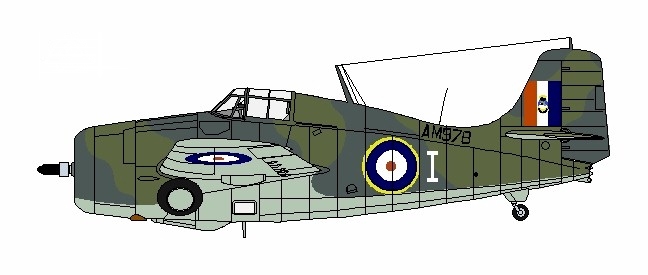
The Australis Navy bought 200 of the Grumman Wildcat fighter for use on the
Albatross class Escort carriers, these aircraft were called the "Martlet" in
Commonwealth service. These with the Sea Hurricane and Gloster Griffon provided
the main fighter aircraft aboard the ships.
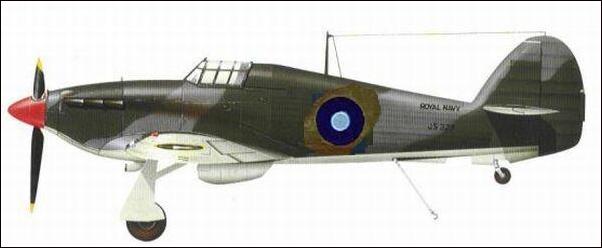
| Displacement | 18,500 tons full load | ||
| Length | 605 ft | ||
| Breadth | 78 ft hull (96 ft over sponsons) | ||
| Draught | 26 ft | ||
| Machinery | 2 shaft steam turbines 44,000shp | ||
| Speed | 25 knots | ||
| Range | 12000 miles at 15 knots | ||
| Armour | 1.5" over machinery and armoury | ||
| Armament | Batch 1 (1934-39) 4 x 4" (4x1) 4 x 2pd (1x4) 16 x 0.5" mg (4x4) |
Batch 2 (1940-42) 1 x 4" (1x1) 12 x 2pd (3x4) 8 x 20mm (4x2) |
Batch 3 (1943-45) 1 x 4" (1x1) 10 x 40mm (3x2 4x1)
|
| Aircraft | 32 (1940 outfit) 20 x Swordfish 12 x Mixture Martlet, Sea Hurricane, Skua, Swordfish. |
||
| Torpedoes | Nil | ||
| Complement | 1240 with aircrew | ||
| Notes | |||
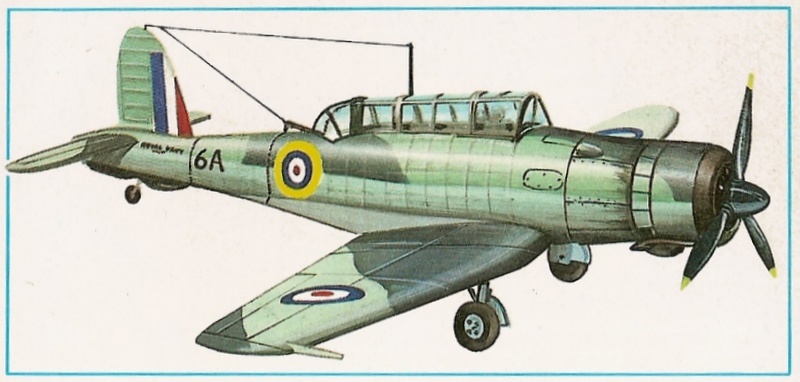
The Blackburn Skua was used in small numbers as recconnaisance fighter/bombers.
While the Swordfish (below) may not have been the best aircraft in the world it
had good range, was a stable aircraft and proved most of all to be a totally
reliable aircraft. The Escort carriers of the Albatross Class and Andania class
kept the Swordfish in production even though the type had been obsolete in 1939.
There were very few aircraft in the North and South Atlantic for the Swordfish
to worry about.

UK Castle Class.
HMS Tintagel Castle, HMS Pendennis Castle, HMS Herstmonceux Castle, HMS Peckforton Castle,
HMS Beeston Castle, HMS Portchester Castle, HMS Wentworth Castle, HMS Someries Castle,
HMS Donnington Castle,
HMS Windsor Castle, HMS Kimbolton Castle, HMS Northborough Castle, HMS Woodcroft Castle,
HMS Chester Castle, HMS Halton Castle, HMS Durham Castle, HMS Walworth Castle,
HMS Restormel Castle.
Australian Albatross Class
HMAS Fulmar trialling the Spitfire in 1940.
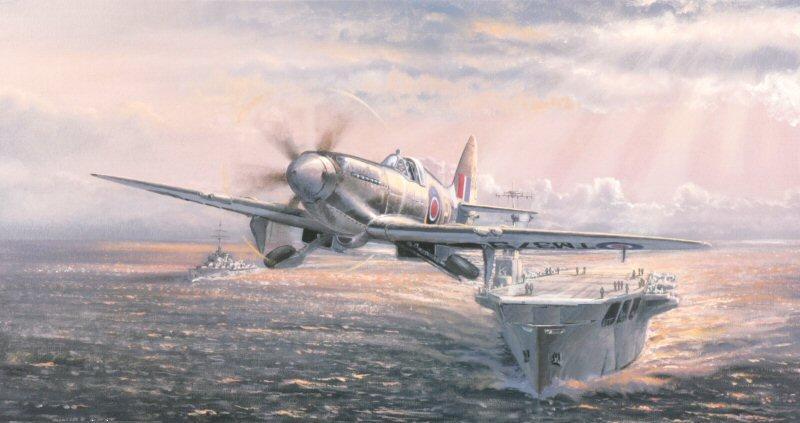
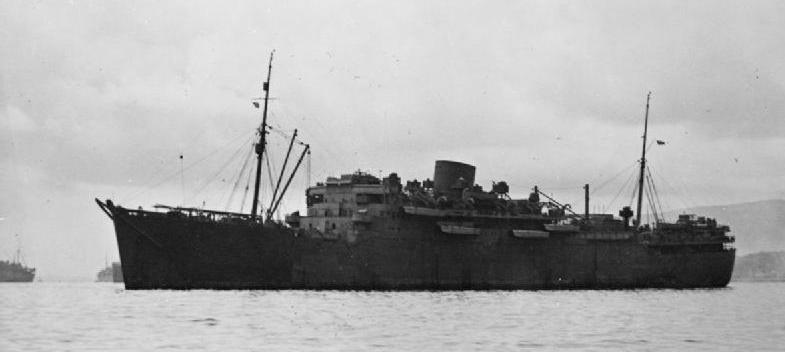
Merchant vessel Durban Castle in 1948, an Albatross class ship in cargo liner fit out.